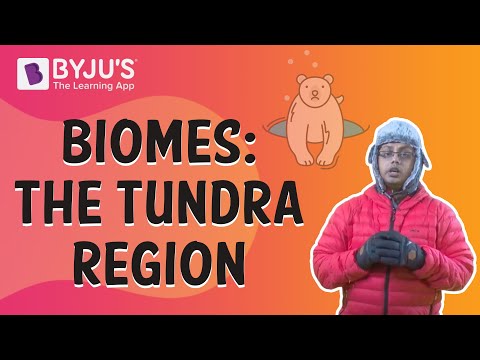An ecosystem is where both the living and non-living interact with each other and their surrounding environment. It is also referred to as the structural and functional unit of ecology.
The term “Ecosystem” was first coined by A.G.Tansley, an English Botanist, in 1935.
The ecosystem is classified into two types:
- Terrestrial Ecosystem
- Aquatic Ecosystem
All land-based ecosystems are terrestrial ecosystems, while the ecosystem present within the water bodies, including the oceans, sea, rivers, ponds, and lakes is basically termed aquatic ecosystems.

Based on the various geological zones, these ecosystems are further classified into different types of ecosystems. The terrestrial ecosystem is classified into:
- Desert Ecosystems
- Forest Ecosystems
- Tundra Ecosystems
- Grassland Ecosystems
Explore more: Ecosystem
Let’s explore more in detail about the tundra ecosystem.
What is the Tundra Ecosystem?
The ecosystem, which is devoid of trees and covered with snow for most of the year is called the tundra ecosystem. These types of ecosystems are mainly found in cold climates and in those regions with limited or scarce rainfall. Polar regions are some examples of the tundra ecosystem.
Arctic and Alpines are two types of tundra ecosystems. Compared to the alpine tundra, the arctic tundra is colder.
This type of ecosystem is found at lower altitudes and is characterized by severe cold environmental conditions, which are similar to deserts. In these regions, the soil is frozen throughout the year and during the summer season, the snow-covered land melts and produces shallow ponds. Small plants with flowers and different types of lichens can be rarely found, as these regions are habitually treeless and always covered by snow.
Features of Tundra Ecosystems
- This ecosystem usually has a long cold winter and a very short hot summer.
- The tundra ecosystem is extremely windy with high humidity and less rainfall.
- The temperature in these regions goes below freezing point at night times. During the daytime, the temperature still permits the growth of plants.
- The major nutrients found in these regions are phosphorus and nitrogen. The phosphorus is generally produced by precipitation, whereas from the biochemical process, these regions produce nitrogen.
Animals Of Tundra Ecosystems
Tundra is the coldest region of all the biomes and the animals of these regions include herbivores, carnivores and omnivores. Wolf, foxes, hare, collembolas, muskox, reindeer, marmots, mountain goats, sheep, elk and other different types of worms, flies, butterflies, and wild insects are examples of notable animals in the tundra ecosystem.
Also Refer: Animals of mountains regions
Plants Of Tundra Ecosystems
A few types of sparse vegetation found in these regions are herbs, mosses and lichens. Other plants include:
- Sedge
- Rushes
- Birches
- Crustose
- Cotton grass
- Dwarf heath
- Heath shrubs
- Dwarf willows
- Dryland sedges
- Sphagnum moss
Also Read: Adaptation and habitats of Plant and Animals.
This article concludes with an introduction to the tundra ecosystem. To know more about the tundra ecosystem, its features, other related topics and important questions, keep visiting our website at BYJU’S Biology.


Comments